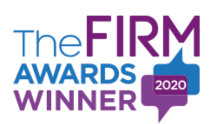The working environment has changed astronomically in the past few decades.
The workplace has changed out of all recognition in every conceivable way, in this post we discuss how we have moved to an agile workforce. Working styles have moved from completely office-based to a rising trend in remote working, tech has become an essential part of modern life and how we communicate has shifted from in-person to video conferencing. This post talks about how the working environment has changed, a post you also might find interesting, is Should the number of vacancies be the measurement of workload?
1970s – 1990s
During this period ‘work’ was carried out in the office and independent work was the norm, staying focused exclusively on your area with little collaboration with your fellow employees. Tech was rudimentary with business communications taking place over landlines and documents such as accounts, marketing materials and design drawings were hard copies that would be sent by post or hand delivered.
Though invented in the 1970s, email didn’t become commercially viable until the 1990s when the internet was created, and personal computers and word processing software were in their infancy until the 1980s and 1990s.

2000 – today
The way we work has evolved to a more collaborative style and office layouts have changed to encourage chance meetings and idea exchange. Comfort has also taken on a new importance with the advent of ergonomic seating, standing desks and remote working.
Technology now drives business life, from video conferencing and online file sharing to smart phones and apps that allow us to work as effectively from a coffee shop as we can in the office.
However, with this plethora of technology, there are downsides. Principally, we can easily shift between tasks or multi-tasking which has a significant impact on productivity. It’s estimated that we lose 40% of productive time by shifting between tasks. During 2020 as a result of the need to social distance and work from home as well as the impact of the pandemic on company’s headcount, workers have been forced to become more agile in the way they work.
What is an agile workforce, and why is it important?
An agile workforce is flexible, embraces new technology to shape how it works, creative, performance driven, and embraces change enthusiastically. It allows businesses to change their model and focus on project-based work.
Project focused businesses can benefit from significant cost savings when using an agile workforce. Only hiring for specific projects rather than year-round, the ability to scale up or down rapidly and filling skill gaps with agile workers are just some of the benefits.
Additionally, an agile workforce can work effectively remotely as well as from a traditional office. The need for large, often expensive real estate to house your workforce is reduced allowing businesses to refocus their resources on scaling their operations and being able to offer specialised skills even if they don’t have the necessary in-house expertise.
These specialised skills are key to understanding what an agile workforce is. Historically companies would routinely employ low to medium level temporary workers as required to work on projects or to cover seasonal peaks.
Agile workers are higher skilled knowledge workers whose specialised abilities and expertise can be used as and when required for project work or scaling and are considerably more expensive than traditional contingent workers, but essential for a business to achieve its goals.
Other benefits that businesses utilising an agile workforce have noticed is:
- Increased productivity and efficiency
- Increased customer satisfaction
- Happier employees as a result of greater flexibility and autonomy
How can you develop an agile workforce in times of economic difficulties and future proof it?
One of the key needs of an agile workforce is flexibility from their employers. They need to be able to work in ways that suit their needs, whether that’s by working from home, or working during non-office hours.
This can be a significant benefit as it allows for adapting to time zone differences and dealing with critical situations that happen outside core office hours.
Jo Skilton, Chief Commercial Officer at digital workplace Unily says, “A workforce that encompasses engaged and passionate individuals will produce higher levels of innovation and staff retention as well as a feeling of individual success,” adding, “Creating an agile workforce is about allowing and encouraging employees to work in short phases of work with frequent reassessment and adaptation of plans.”
Trust is another key aspect of building an agile workforce. Hiring the right people and not micromanaging them can improve output and productivity.
“Agile is very much a state of mind. Companies that have a growth mindset will invest in people who not only tolerate change but crave it,” advises Tamara Littleton, founder and Chief Executive of The Social Element.
“Having the right talent who are happy to test different processes and continually innovate will be the difference between a future company and a dinosaur.”
Though many staff who are part of an agile workforce want to work remotely or work flexibly outside of a normal 9 to 5, it is important to encourage regular staff meetups whether in person or digitally. These meetups are great ways of building strong agile teams and ensuring your remote workers don’t feel isolated.

What are the benefits that come from having an agile workforce?
Developing an agile workforce comes with many benefits both for the organisation and the individual. These include increased productivity, efficiency and morale of the individual which in turn facilitates improved talent acquisition and retention. Organisations like Google and Apple have outstanding reputations as employers and consequently attract exceptional talent and keep them for longer.
Relationships are improved both internally and client facing relationships and absenteeism reduces as does attrition. There can be a significant cost saving with effective desk utilisation as many companies are spending money on desk space that isn’t being used. This could be repurposed by redesigning the office to be both smarter and greener which will reduce your carbon footprint as well as free up space for other activities.
Individuals working remotely cut out their commuting time, improving their work life balance and when agile workers have an improved balance in their lives, creativity and innovation increase which benefits the organisation.
Over the past fifty years the increasing use of technology has improved the way we work and the manner in which we work. Businesses have recognised the importance of collaboration and the advent of smartphones and business apps now allows workforces to be increasingly agile.
This workforce agility has allowed companies to utilise specialist skills that aren’t available in-house and react quickly to business growth and seasonal demands without increasing headcount and the annual costs associated with full time employees.
Allowing employees the flexibility to work in a way that suits their personal circumstances and lifestyle gives organisations flexibility, allowing for time zone differences and cover for critical situations that develop outside of core hours.
Lastly, an agile workforce comes with many inherent benefits from cost savings to improved relationships, increased productivity and creativity to reduce attrition and absenteeism.
The agile workforce is the workforce of the future and the sooner you begin adopting this approach the less chance there is that you will be left behind and counting the cost of not acting sooner.
You might also find these other posts interesting:
- Breaking the Mould: Why Transformation Trumps Traditional Restructuring in Today’s Uncertain Times
- Heading Back to the Office: How Companies Are Implementing Stricter Return-to-Work Policies
- Navigating Wage Increase and Inflation’s Impact through Recruitment Outsourcing in 2023
- How we increased direct hires from 62% to 97% saving £500,000 in 6 months.
- Decreased the reliance on agency usage to save £350,012.50



